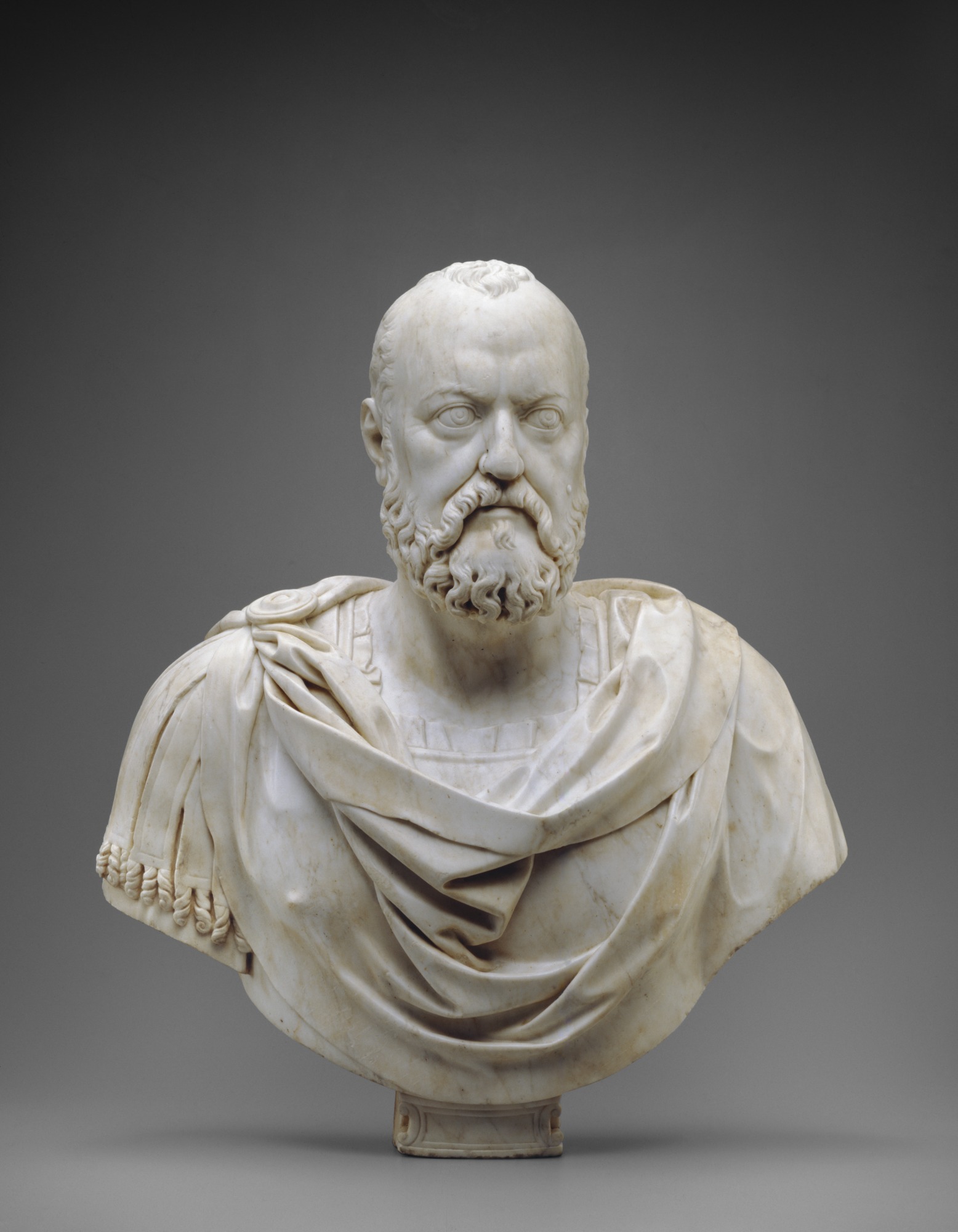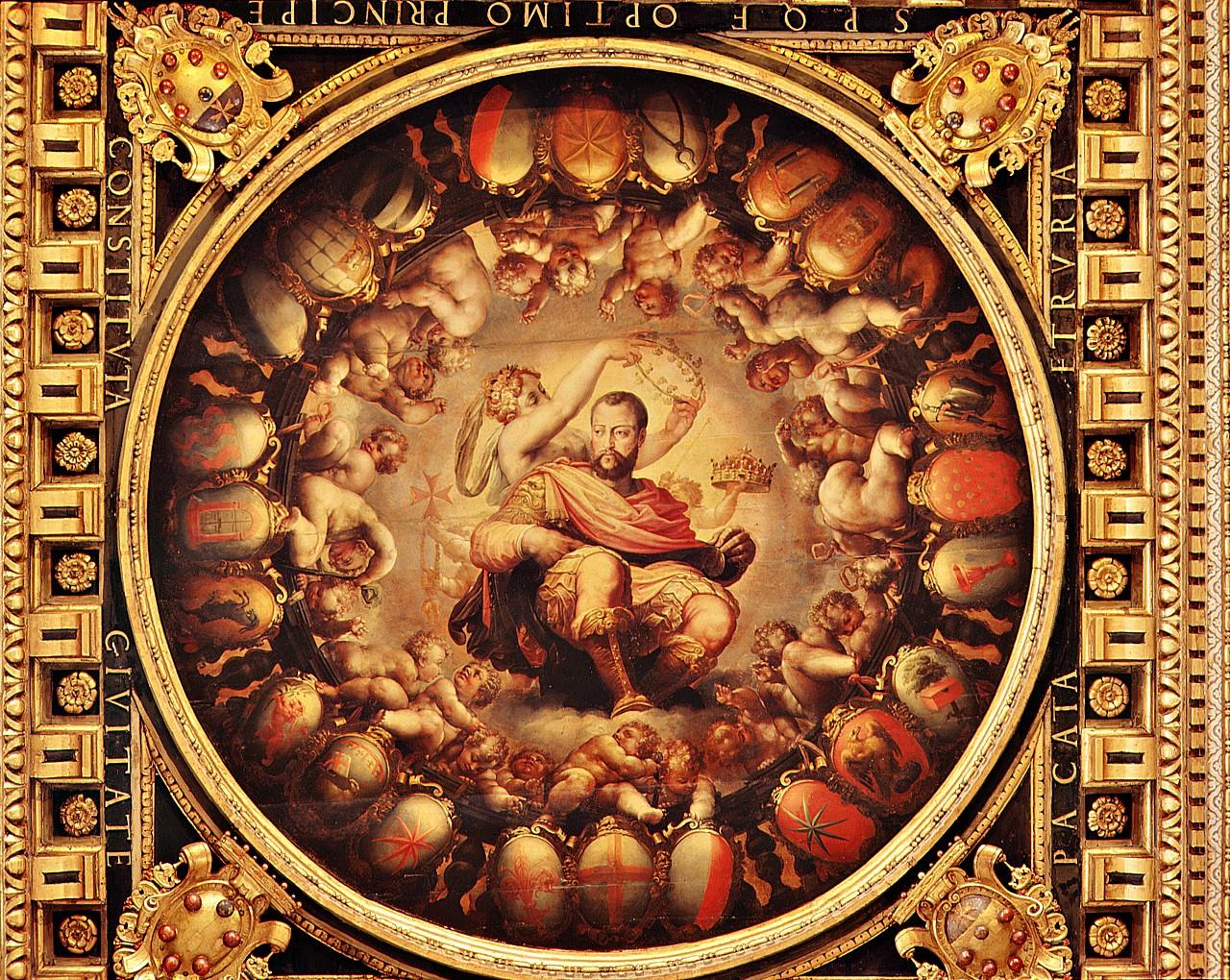THE GOLDEN AGE
Cosimo I often compared himself to Augustus Caesar, the Roman emperor who brought Rome into a golden age. In a similar way, Cosimo did much for the city of Florence, including the improvement of roads and waterways and the revival of a prosperous economy.

Cosimo comissioned marble busts of himself "all' antica" which means "in the matter of the ancients'". The use of classical style was symbolic of his connection to Augustus. This communicated his god-like nature and his vision of himself as the cultivator of Florence.
Bust of Cosimo I, Duke of Tuscany, Giovanni Bandini 1572
In this bust, Cosimo is wearing an interpretation of the cuirass, clothing worn by Roman generals which is fastened with a fibula, a Roman brooch
"...this work represents an icon of Medici rule, revealing the importance of Augustan imagery for political power and identity."
~ Alan P. Darr

Apotheosis of Cosimo de Medici, Giorgio Vasari 1564 - Palazzo Vecchio
This tondo is the center of the ceiling of the Sala Grande in the Palazzo Medici. It originally featured Fiorenza (Florence) in the middle, but then was replaced by an image of Cosimo. With the use of the oak leaves and garments as Augustan imagery, Cosimo conveyed his belief that he completed the work of Augustus by bringing Florence to a golden age.
"This substitution of Cosimo for the city itself sumarizes the complete transformation of Florentine political thinking."
~ Kurt Forster
The inscription on top of the tondo, SPQF, parallels the motto of the Roman Republic (SPQR - The Senate and the People of Rome)
The inscription constitua civitate (to give definite form to the state) indicates Cosimo's role in the Republic.
Apotheosis of Cosimo de Medici, Giorgio Vasari 1564 - Palazzo Vecchio
LEGACY>